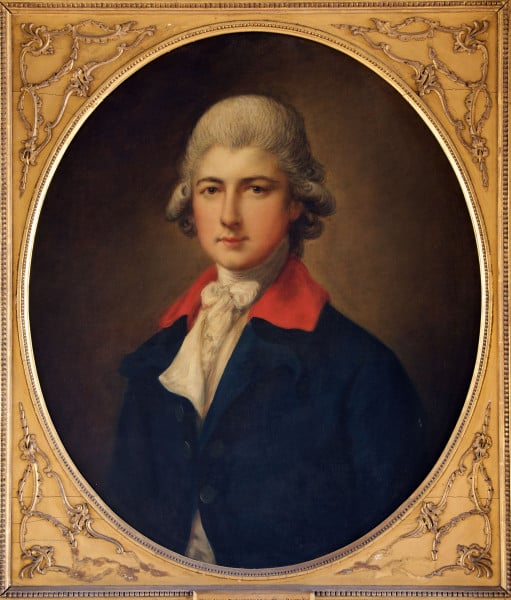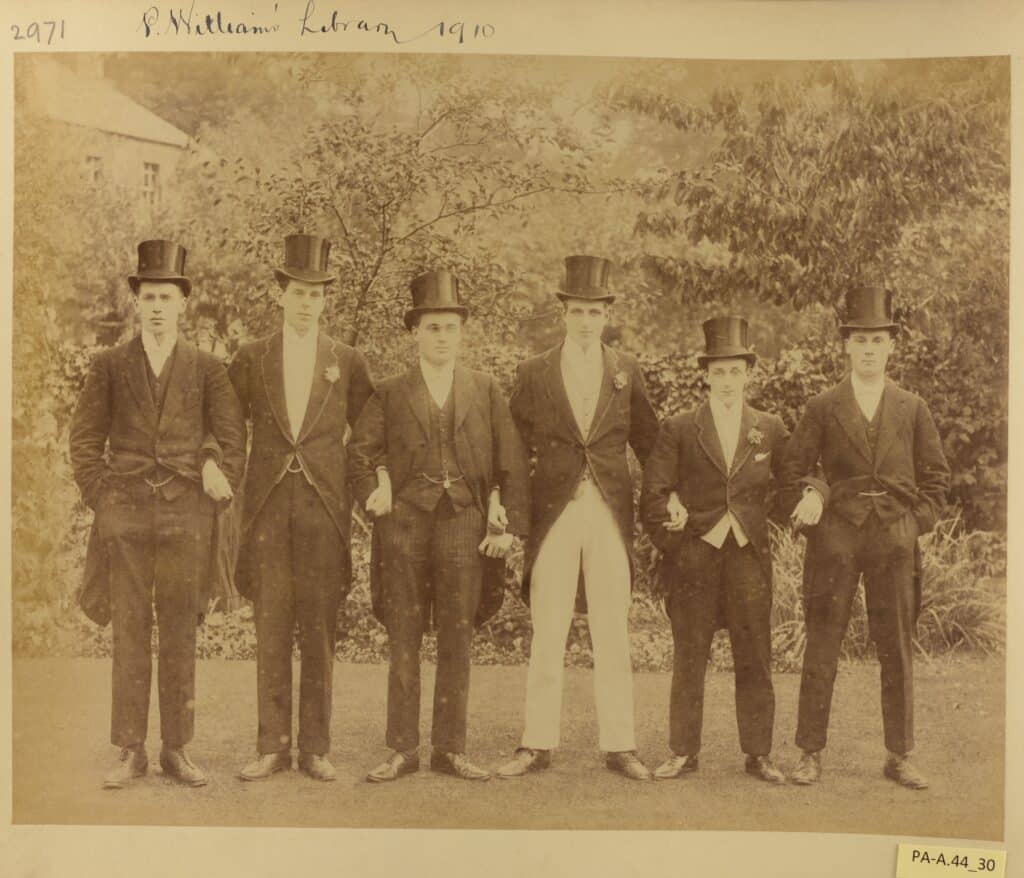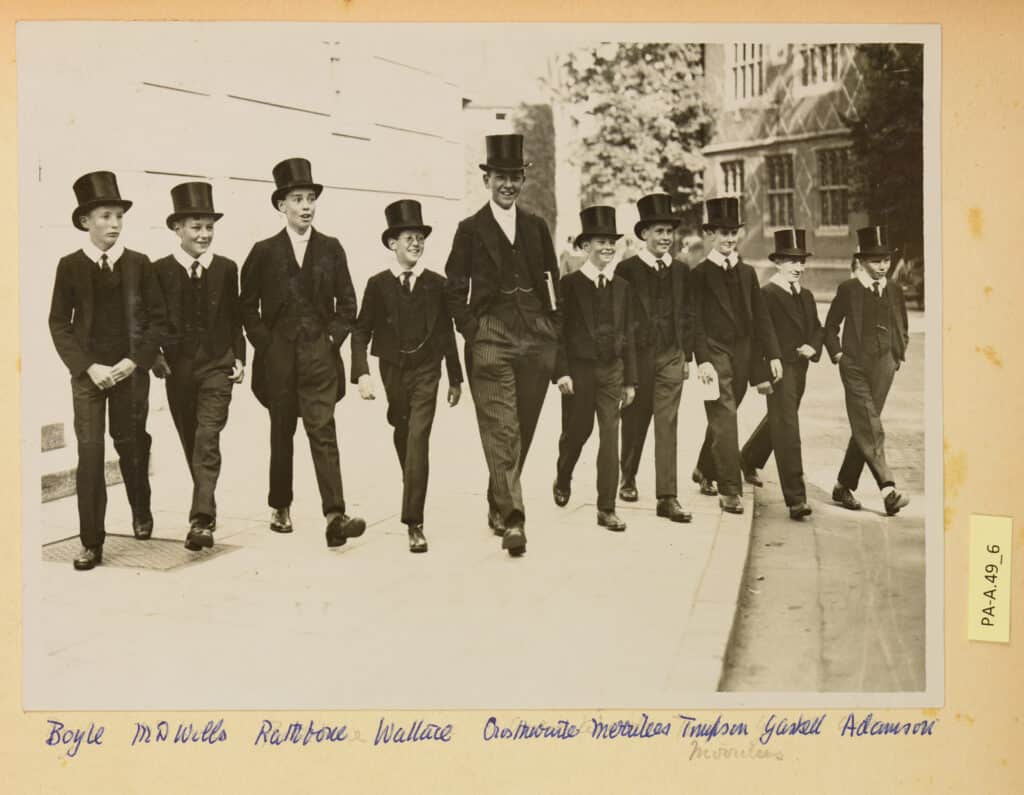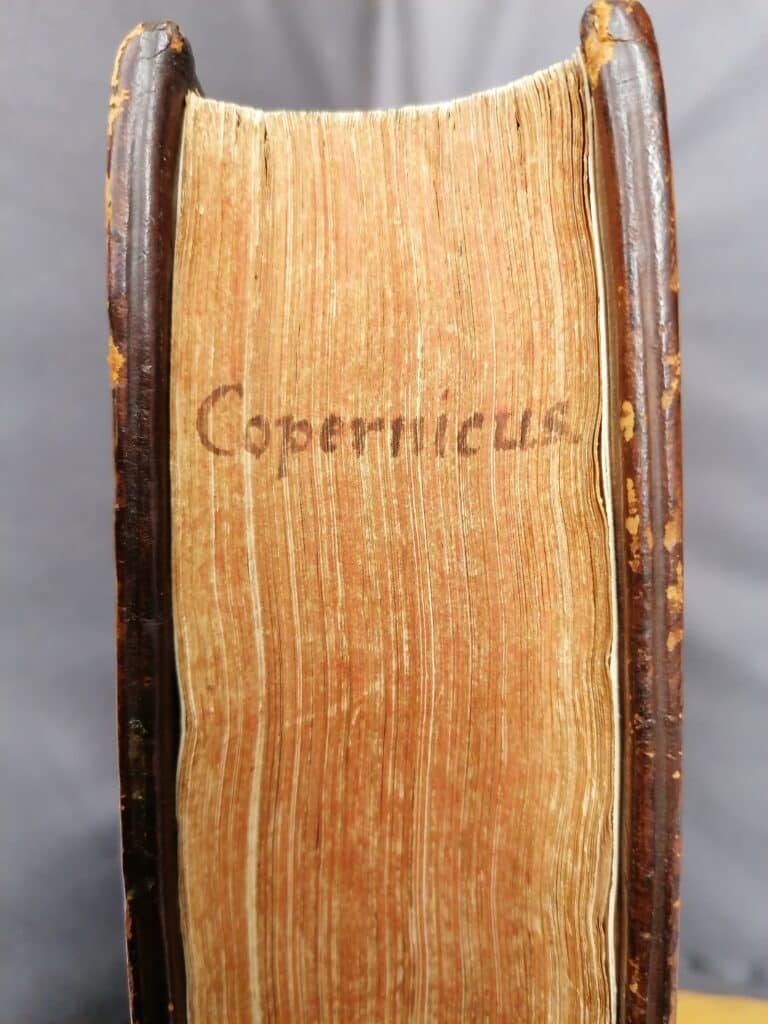Consisting of a black tailcoat, waistcoat and pinstriped trousers, with a stiff white collar, an Eton pupil is today easily identifiable by the uniform, known as School Dress. Seniority within the School is denoted by wearing “stick ups”, a winged collar with bow tie, with other boys wearing the “Eton collar”. However, this has only been the officially regulated uniform since the arrival of a new Head Master in 1964.
In the 18th century, the dress worn by boys was a colourful affair. Paintings show boys in bright greens and yellows, or in blue coats with red collars.

By the early 19th century, boys generally wore blue cloth coats and yellow waistcoats. From about 1850, informal dress regulations decided on by the boys themselves saw Junior boys wearing the Eton collar, black tie and short jacket, known as a “bum-freezer”, with the Senior boys wearing tails and white bow ties. Early photographs from the 1860s show a uniformity of style and colour, but individual flair in the cloth, pattern and adornments.
At the enquiry of the Public Schools Commission in 1861, the Head Master reported that “with regard to clothes, the boys wear no particular dress, except that they are obliged to wear a white neckcloth: they would not be allowed to wear a yellow coat or anything very much out of the way: they must however wear the common round hat [top hat].”

In this photograph, taken in 1910, subtle differences can still be seen in the thickness and distance between the stripe in the trousers, and in the design of the lapels.

This photograph shows boys wearing the Junior uniform of bum-freezer, Eton collar and black tie. The bum-freezer was worn by boys under 5′ 4 and was phased out in 1967. The top hat, although not officially abolished until the new regulations, had disappeared by 1948, a casualty of the Second World War.
It was only under Anthony Chenevix-Trench, Head Master 1964-1970, that official dress regulations were introduced, leading to all boys wearing the recognisable School Dress of today. Up to that point, convention was really the only factor in determining what boys should wear.



